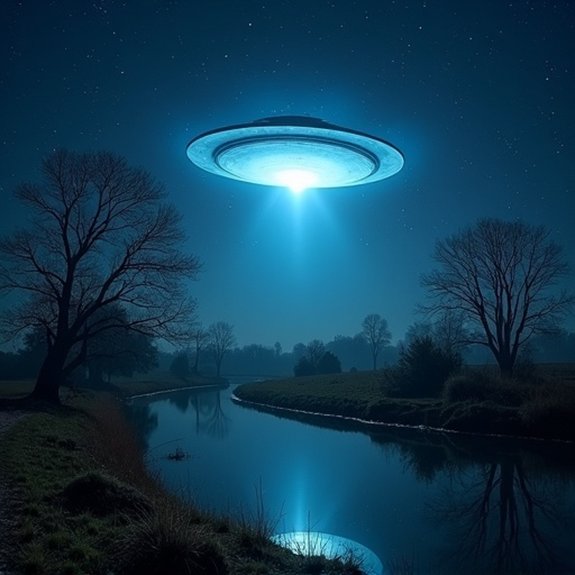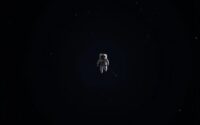The Cometa Report: French UFO Study
In 1999, France’s military and aerospace elite broke decades of silence about UFOs. The COMETA committee, led by General Denis Letty, didn’t just compile another report—they’d issued a warning. High-ranking officials examined cases that defied conventional explanation, from commercial pilot encounters to physical landing traces. Their conclusion challenged everything governments had publicly acknowledged about unidentified aerial phenomena. What they’d discovered would force a reassessment of national security priorities.
Introduction

When the French government established GEIPAN (Groupe d’Études et d’Informations sur les Phénomènes Aérospatiaux Non-identifiés) in 1977, it became the world’s first official state-sponsored UFO research program with a mandate to scientifically investigate unidentified aerial phenomena. This groundbreaking initiative operated within France’s national space agency, CNES, giving it unprecedented legitimacy and resources.
In 1999, a group of high-ranking French military officers, scientists, and aerospace experts formed COMETA (COMité d’ETudes Approfondies) to conduct an independent assessment of UFO evidence. They weren’t conspiracy theorists but respected professionals including generals, admirals, and former defense officials. Their 90-page report examined decades of international UFO cases, evaluated potential explanations, and reached startling conclusions about national security implications. The document’s release marked a pivotal moment when credible authorities publicly acknowledged that some UFO incidents couldn’t be explained by conventional means.
Formation of COMETA Committee
Although France’s official GEIPAN program had been investigating UFOs for over two decades, a group of concerned defense and aerospace professionals believed the phenomenon demanded deeper scrutiny outside government channels. In 1996, retired French Air Force General Denis Letty assembled this independent committee called COMETA—an acronym for “Committee for In-Depth Studies.” The group’s membership included former military officers, engineers, scientists, and a police commissioner who’d previously worked on aerospace projects and national security matters.
They weren’t conspiracy theorists or UFO enthusiasts. These were credentialed professionals from France’s defense establishment who recognized that unexplained aerial phenomena posed potential implications for national security and aviation safety. Meeting privately over three years, they analyzed hundreds of cases, interviewed witnesses, and reviewed classified documents to produce what would become France’s most thorough civilian UFO assessment.
Notable Cases or Sightings

The COMETA report examined several compelling incidents that defied conventional explanation, with particular attention to cases involving military personnel and radar confirmation. Among the most significant was the 1994 Air France Flight 3532 encounter, where the crew observed a large disc-shaped object near Paris that was simultaneously tracked on military radar. The report also analyzed the 1981 Trans-en-Provence case, where physical trace evidence remained after a UFO landing witnessed by a local resident.
The committee reviewed international incidents too, including Belgium’s 1989-1990 wave involving F-16 fighter jets pursuing triangular craft. They studied the 1976 Tehran incident where Iranian pilots couldn’t fire weapons at an unidentified object due to equipment failure. These cases weren’t dismissed as misidentifications but classified as unexplained phenomena requiring serious scientific investigation.
Common Theories or Explanations
While conventional explanations account for most UFO sightings, the COMETA report systematically evaluated various theories for the remaining unexplained cases. The committee examined natural phenomena including atmospheric plasma, ball lightning, and unusual cloud formations. They analyzed misidentifications of aircraft, satellites, weather balloons, and astronomical objects.
The report’s authors considered psychological factors like mass hysteria and perceptual errors but found these insufficient for certain well-documented incidents with multiple credible witnesses and physical evidence. They reviewed secret military aircraft explanations, noting that while some cases might involve classified technology, this couldn’t explain historical sightings predating modern aviation.
Significantly, COMETA didn’t dismiss the extraterrestrial hypothesis. They concluded it remained valid for cases where objects demonstrated intelligent control, extreme acceleration capabilities, and flight characteristics beyond known technology.
Frequently Asked Questions
What Specific Policy Recommendations Did COMETA Make to the French Government?
COMETA recommended France strengthen its UFO detection capabilities, enhance cooperation between military and civilian agencies, increase scientific research funding, develop international protocols for UFO encounters, and prepare the public for potential confirmation of extraterrestrial origins.
How Was the COMETA Report Received by International Scientific Communities?
International scientific communities largely ignored the COMETA Report, viewing it skeptically despite its military authors’ credentials. While UFO researchers praised it, mainstream scientists didn’t engage seriously, considering it speculative rather than scientifically rigorous.
What Methodology Did COMETA Use to Analyze and Classify UFO Incidents?
COMETA’s methodology involved analyzing military and civilian UFO cases through witness credibility assessment, physical evidence evaluation, and categorizing incidents by explanation probability. They’ve applied aerospace expertise to classify cases as identified, probably identified, or unexplained phenomena.
Who Funded the COMETA Study and What Was Its Budget?
The COMETA study wasn’t publicly funded but was privately financed by its members, who were retired French military officers, scientists, and aerospace experts. The group hasn’t disclosed its specific budget or detailed financial information.
Has COMETA Published Any Follow-Up Reports or Updates Since 1999?
COMETA hasn’t published any official follow-up reports or updates since their original 1999 study. The group’s members have occasionally given interviews and made public statements about UFO phenomena, but they’ve released no thorough new documents.
Related Posts

Aliens in Ancient Greece: Myth or Memory?

Are USOs Proof of Alien Bases Under the Sea?
